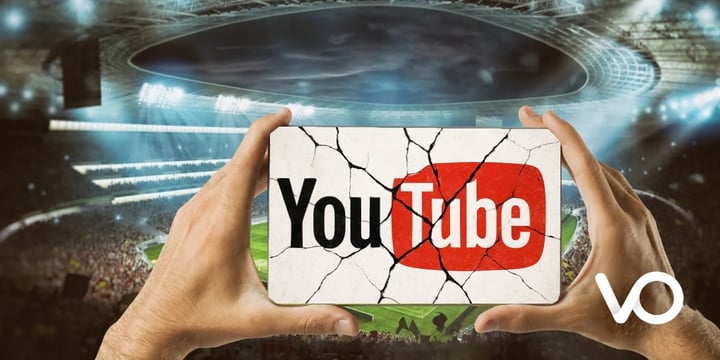The latest high-profile argument over channel distribution in the US saw millions of YouTube TV subscribers temporarily lose access to Disney channels in an ongoing carriage dispute. Disney lost millions of dollars per day while YouTube TV churn increased dramatically.

On October 31, over 20 Disney-owned channels suddenly went dark on YouTube TV, depriving somewhere between 8-10 million US subscribers of access to some of their main live sports and entertainment. ESPN, ABC, FX, National Geographic and more disappeared..
As Variety reports, the disagreement revolved around price. Google claimed Disney had demanded an unprecedented retrans (retransmission) fee increase, while Disney said the tech giant had been “refusing to pay fair rates for our channels.”
Whoever was at fault, the channels were dark for two weeks. Subscribers, many of whom have cut the TV cord and are now reliant on the circa $80 per month YouTube TV service for access to their favorite shows, were furious. So much so, in fact, that YouTube began issuing $20 credits to try and appease them.
Given ESPN’s absence during peak football season - the timing could not have been worse. Variety reported that 24% of YouTube TV subscribers either canceled or planned to cancel in the near future, and Disney was estimated to be losing $4.3 million a day in lost revenue.
These are big numbers. High-profile carriage disputes, called so because the distributor ‘carries’ the content from the content owner, can be incredibly damaging for the companies involved. And in an era of massive broadcast fragmentation, where consumer trust is one of the most valuable currencies there is, conflicts like this have serious implications.
A deal was eventually reached on November 14, but the ramifications of the event, and the two-week disappearance of Disney channels from YouTube TV, will echo for some time to come.
Shifting Dynamics
For Disney this seems to be a particular problem. This is the fourth consecutive year that the House of Mouse's networks have been off the air on a major provider. The company's channels were blacked out for a couple of days on the Dish Network in 2022, for 11 days in a dispute with Charter in 2023, and for 13 days with DirecTV in 2024. And it had a similar disagreement with YouTube TV back in 2021 that then saw a three-day blackout take place.
 The problem is that power dynamics are shifting. In the original carriage disputes of the 1990s, the advantage was very much with the content owners (in this case – Disney). The distributors — i.e. the cable companies — needed them arguably more than the other way around, as they had many routes to market, including free-to-air. Viewers expected to see network TV content via their cable service, and that was that.
The problem is that power dynamics are shifting. In the original carriage disputes of the 1990s, the advantage was very much with the content owners (in this case – Disney). The distributors — i.e. the cable companies — needed them arguably more than the other way around, as they had many routes to market, including free-to-air. Viewers expected to see network TV content via their cable service, and that was that.
Platforms as Gatekeepers
Now, everything is different. Platforms have become the new gatekeepers, and it is they that have the direct relationship with the consumer. They own the UI, govern the billing relationship, and drive discovery and recommendations. Viewers no longer navigate to a channel; they open an app — and the app owners are pushing back hard against content owner demands.
Business Insider reports that Google's YouTube TV has also engaged in hard-fought negotiations with Fox and NBCUniversal in the last few months. Unlike with Disney, however, YouTube TV reached short-term deal extensions that prevented its subscribers from losing their channels during negotiations.
The longest blackout in modern TV history was a dispute between HBO and Dish that lasted for over two and a half years, from November 2018 until July 2021. No one really expects any future dispute, to last as long. But things are changing.
We tend to think of Disney as a major player. And, in our industry, it is. It believes it has the leverage to extract more from YouTube partly because it has other routes to market in the shape of Hulu + Live TV and Fubo that are essentially the same value proposition as YouTube TV. And that’s not to mention its own channels, Disney+, and more. Disney has always been about content and still is.
But YouTube owner Alphabet is roughly 17x the size of Disney — another indication of how the power dynamics have shifted. Big Broadcast is now dwarfed by Big Tech and seems to be in no mood to play a subservient role.
What Will Consumers Do Next?
One interesting fact that seems to be emerging from the data is that this is not souring consumers on the prospect of streaming. Frequent blackouts — and the campaign group American Television Alliance reckons there have been 2439 of those, taking 147,876 days of television off the air since 2010 — do not seem to erode trust in the central concept of streaming and aggregation. Rather, consumers pivot to another centralized platform that offers a similar service.
Such behavior is becoming increasingly common. It has been estimated that almost a third of new SVOD subscriptions in the US have come from such centralized platforms this year. Roku, for example, explicitly ties revenue growth this year to streaming services distribution activities.
This likely means that the battleground of carriage disputes and the power dynamics that feed into them will evolve again in the very near future. Effectively, in the old days consumers were hostages to blackouts with limited options for accessing content via other means. Today, with content providers often seeking to be listed with as many aggregators as possible, viewers can effectively re-bundle elsewhere with minimal friction. Rolling contracts help make the process even easier.
The Importance of Sports

The sticking point is sports. Sports rights tend to exclusivity, and re-bundling is not always an option, which is one of the reasons why rights holders pay so much money for them in the first place. In this particular case, ESPN-owning Disney was well set to entice consumers missing Monday Night Football and much more away from YouTube TV to its own similar services (indeed, Google claims this was one of its prime motivations for the blackout).
All this is likely to lead to further inflationary pressure on sports rights, which will lead to further disputes about fees, which could lead to further blackouts in the future. The record for blackouts was set in 2020 with over 350 retrans blackouts taking place. So far this year, there have only been 77, but the Disney / YouTube TV conflict more than made up for the lack of numbers by sheer scale and its potentially lasting impact alone.
